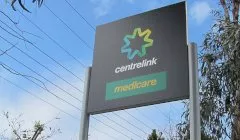Save
Controversial tax proposal in spotlight as dividend returns spike in 2018
Save
Controversial tax proposal in spotlight as dividend returns spike in 2018
Total dividends across the Australian market increased significantly last year, as the fast-approaching federal election brings Labor’s proposed axing of refundable franking credits into the spotlight.
Controversial tax proposal in spotlight as dividend returns spike in 2018
Total dividends across the Australian market increased significantly last year, as the fast-approaching federal election brings Labor’s proposed axing of refundable franking credits into the spotlight.

Market-wide dividends rose by almost 8 per cent in dollar terms last year, according to one investment management firm, with large share buybacks by major market forces such as BHP and Rio Tinto spurring positive returns.
“The almost 8 per cent increase in market-wide dividends was particularly encouraging given the traditional income stocks – the big four banks and Telstra – broadly maintained, or in Telstra’s case cut, their dividends in 2018,” Dr Don Hamson, managing director of Plato Investment Management, said.
“2018 has clearly been a very strong year for equity income generation – and this will continue into this year.”
He said such figures were particularly timely, given that a Labor-led government would move to scrap franking credit refunds following the upcoming federal election.

“To that end, we would encourage companies with excess franking account balances to consider increasing franked dividends or undertaking tax-effective buybacks before the end of this financial year,” Dr Hamson asserted.
Leading up to the May election, Dr Hamson recommended dividend income investors, particularly retirees and those with self-managed super funds, broaden their investment from Telstra and the big four banks to achieve maximum capital growth.
“Investors should be wary of this concentration as there are many other good companies that offer both consistent dividend income and better potential for capital growth in Australia and globally,” he said.
However, Dr Hamson did remain skeptical that an ALP-led government would be able to push the necessary legislation to remove franking credit refunds through the senate, a move he said would “likely prove difficult”.
The battle over franking credit refunds
His words come as the House of Representatives standing committee on economics is currently holding public hearings across Australia for its inquiry into the implications of removing refundable franking credits.
The inquiry is looking into how the changes would likely affect investors, particularly retirees and self-managed super fund members, after experts and lobbyists suggested Labor’s claim that the policy will only impact the wealthy was flawed.
Expected behavioural changes by investors should the changes be implemented, including an increased dependence on the pension, will likely also be looked at by the inquiry, as well as if there are carve-outs applied and what this would mean for additional complexity to the system.
Researchers, financial professionals and industry bodies alike have questioned Labor’s proposed policy since its announcement, with many seeking to highlight the significant impact the incorporation of franking credit dividends has on the retirement savings of more than 1 million Australians, many with modest incomes.

Tax saving
Navigating tax laws for capital gains in 2023
The landscape of Australian tax laws surrounding capital gains is ever-changing, with 2023 being no exception. Read more

Tax saving
What you need to know about the tax implications of crypto
One million Aussies are now invested in crypto, but many have not thought about how these investments will affect them at tax time. Read more

Tax saving
Welfare overhaul could give recipients a leg-up
Australia’s Centrelink recipients who’ve been doing it tough are in for a potentially easier time if the federal government pursues ambitious reforms that could provide sturdier safety nets. Read more

Tax saving
Students should think twice before tapping into their super
Former students might want to think carefully before they look to take advantage of the federal government’s biggest first home buyer incentive. Read more

Tax saving
Advocates call for an end to tax cuts
Social services sector advocates have warned that further tax cuts may make solving Australia’s biggest challenges much harder. Read more

Tax saving
ATO and AUSTRAC may gain new phone-tapping powers
A proposed update to electronic surveillance legislation could see the ATO armed with new powers that would allow the agency to bug phones and intercept online communications. Read more

Tax saving
Over 2m Aussies asked the TPB for help during the last year
As the economy recovers, Australia’s tax regulator says it’s planning to put unregistered practitioners under the microscope. Read more

Tax saving
Will you pay higher taxes due to bracket creep?
Bracket creep will see Australians paying more tax on average, unless further cuts are introduced in the future. Read more

Tax saving
Navigating tax laws for capital gains in 2023
The landscape of Australian tax laws surrounding capital gains is ever-changing, with 2023 being no exception. Read more

Tax saving
What you need to know about the tax implications of crypto
One million Aussies are now invested in crypto, but many have not thought about how these investments will affect them at tax time. Read more

Tax saving
Welfare overhaul could give recipients a leg-up
Australia’s Centrelink recipients who’ve been doing it tough are in for a potentially easier time if the federal government pursues ambitious reforms that could provide sturdier safety nets. Read more

Tax saving
Students should think twice before tapping into their super
Former students might want to think carefully before they look to take advantage of the federal government’s biggest first home buyer incentive. Read more

Tax saving
Advocates call for an end to tax cuts
Social services sector advocates have warned that further tax cuts may make solving Australia’s biggest challenges much harder. Read more

Tax saving
ATO and AUSTRAC may gain new phone-tapping powers
A proposed update to electronic surveillance legislation could see the ATO armed with new powers that would allow the agency to bug phones and intercept online communications. Read more

Tax saving
Over 2m Aussies asked the TPB for help during the last year
As the economy recovers, Australia’s tax regulator says it’s planning to put unregistered practitioners under the microscope. Read more

Tax saving
Will you pay higher taxes due to bracket creep?
Bracket creep will see Australians paying more tax on average, unless further cuts are introduced in the future. Read more















